Follow along as I create a sustainable aquascaped medium-sized freshwater aquarium, including essential equipment, plant recommendations, maintenance and much more, all wrapped up into this comprehensive guide.
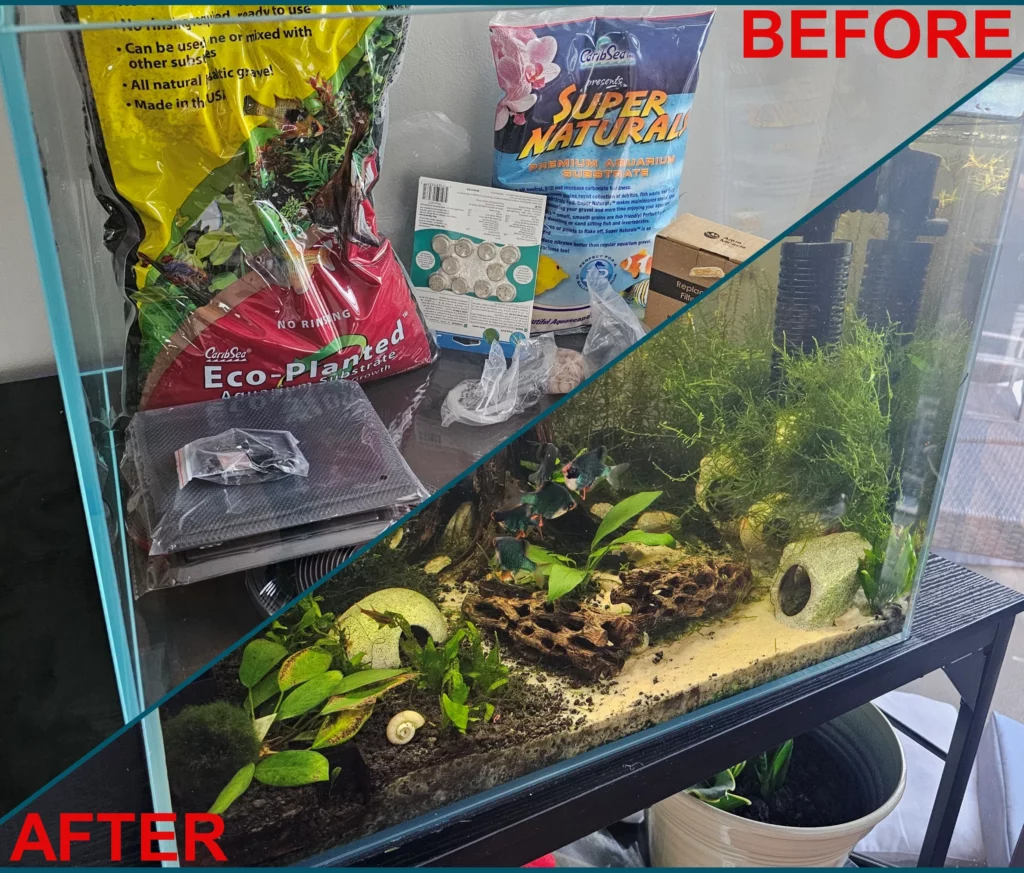
Introduction
Every freshwater aquarium guide tells you to provide a suitable environment for your aquatic pets so that they can live long and healthy lives. Before we get to that, the first step is choosing a tank size based on the amount and kinds of pets that’ll call it home.
After which, this post will get into aquascaping tips for beginners, essential materials, fish-in-cycling, maintenance tips, and fish medicine for illness treatment. Let’s get started!
Quick Sidenote: Do you want to watch this article instead of reading it? Checkout the highlight video below from our YouTube Channel (Or read the more detailed article below), be sure to Subscribe For More Great Fishkeeping Content:
Essential Tank & Filtration Equipment
32-Gallon Fish Tank
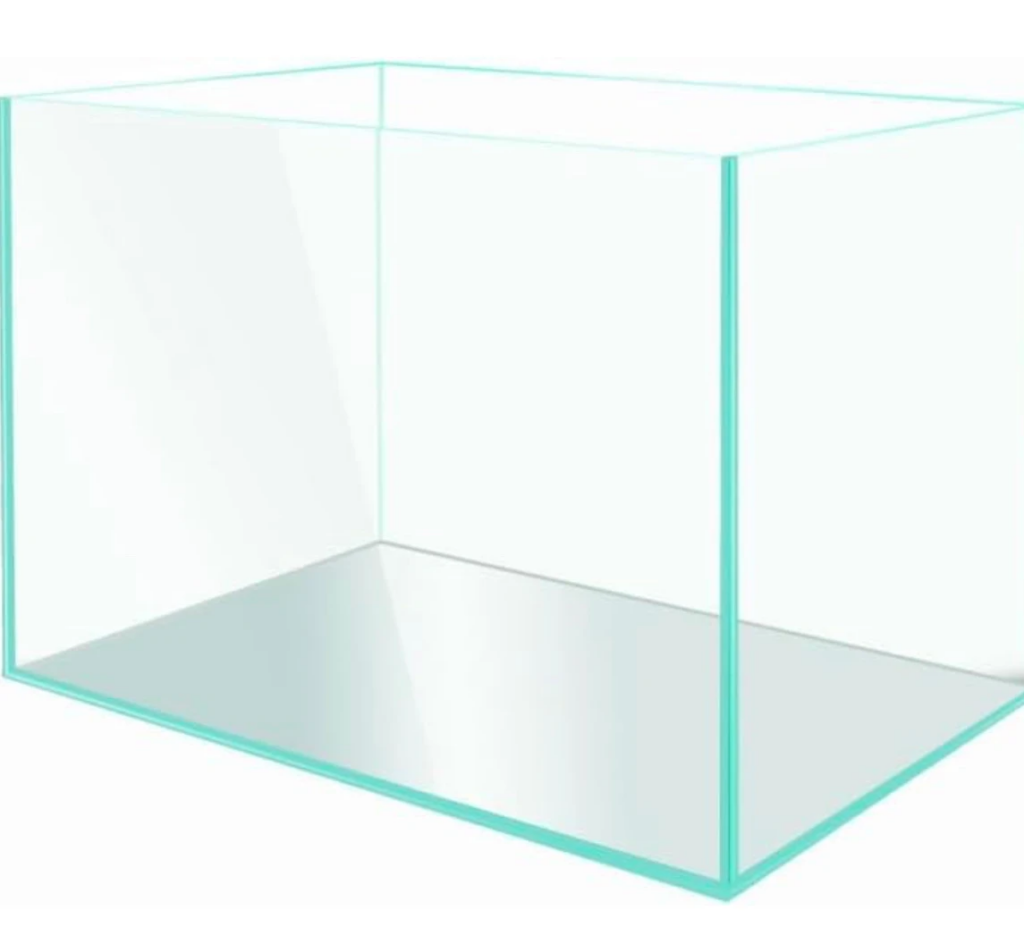
Found Here On Amazon
($189 When Originally Purchased)
This 32-gallon fish tank setup suits an average 10 – 12 inch or smaller-sized aquatic species, more on what fish we chose later. It’s time to design our rectangular 32-inch tank with the right aquarium filtration systems to keep the environment clean and reduce the risk of diseases.
Author’s Note: Check out our Cheat Sheet to Fish Tank Gallon Sizes and Dimensions for more on choosing the right-sized tank.
32-Gallon Tank Compatible Filtration System
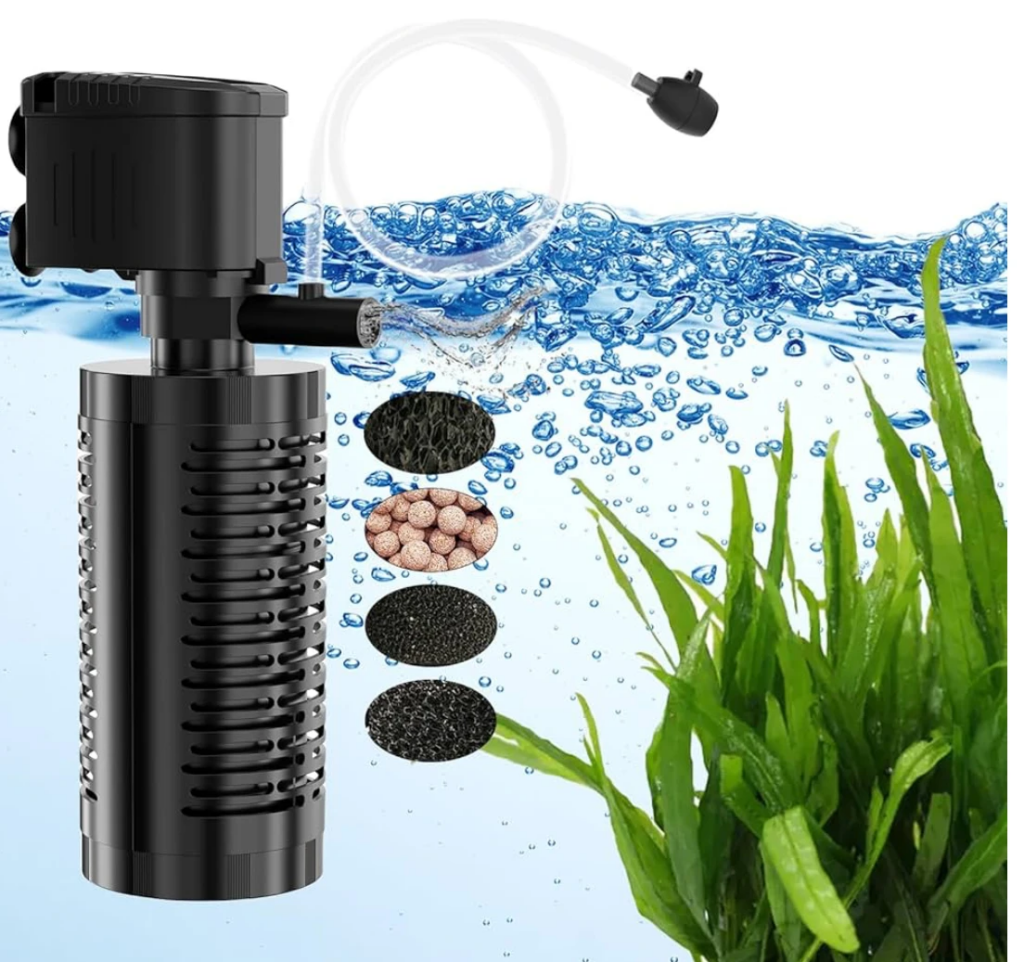
Found Here On Amazon
I love this four-stage filter as it sifts the tank’s water through several layers of substrates trapping waste materials while providing my tank with aeration and a gentle flow.
This filter is also easy to clean without the need to constantly purchase replacement filters, although I did purchase a replacement set as a backup to switch out between water changes. To clean the filter simply remove the filter substrates, wash, and then replace it.
Attached to my filtration system I am using this surprisingly quiet Whisper Air Pump to provide oxygen to my brick air stone which creates a curtain of bubbles along the back of my aquarium. Not only does it look great, this bubble stone bar provides additional oxygenation to my tank’s inhabitants.
32-Gallon Tank Light Fixture
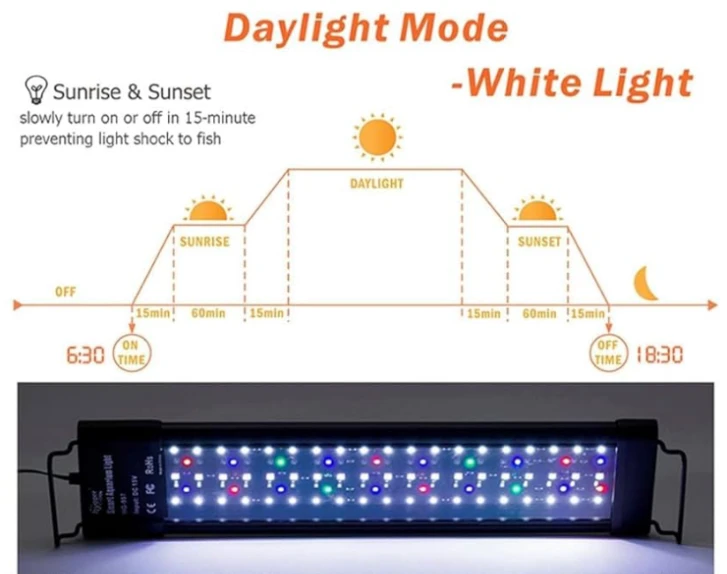
This is one of the best lighting fixtures I have had so far, the hygger Auto On/Off LED aquarium light extends if needed to perfectly fit a wide range of aquariums. It also has 7 different light settings for fun customizations.
Not only that, it has a built in timer that allows you to precisely set day/night within your tank. It even slowly transitions between the day and night time modes which basically eliminates shock I have witnessed with other lights that just switch directly between on and off.
Once you’ve covered these essentials, let’s move on to aquascaping!
Aquascaping & Decorative Elements
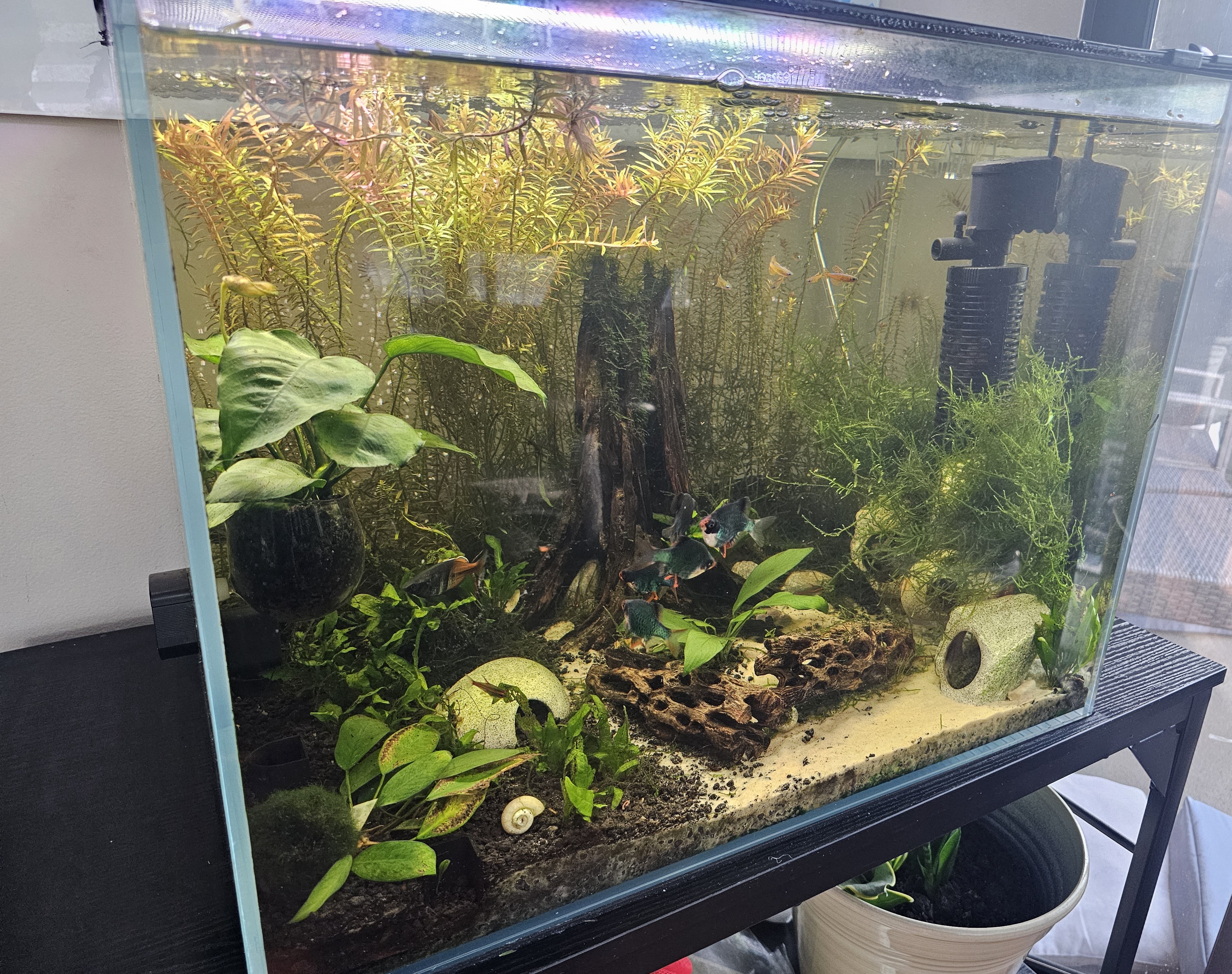
Creative aquarium decoration ideas must also be functional for optimal tank conditions.
Substrate Layers
Your fish tank substrate choices must be gentle on their scales while mimicking their natural habitat. Examples are fine sand, black or brown, smooth gravel, or black pebbles. Here, we mixed Black Planted Aquarium Substrate as our bottom layer and for planted areas with fine white sand as our top cap layer and in areas not planted.
I also like to place API Root Tabs throughout the first layer of my tank’s substrate which is an aquatic fertilizer that contains essential nutrients including iron, potassium and carbon to help establish lush planted tanks.
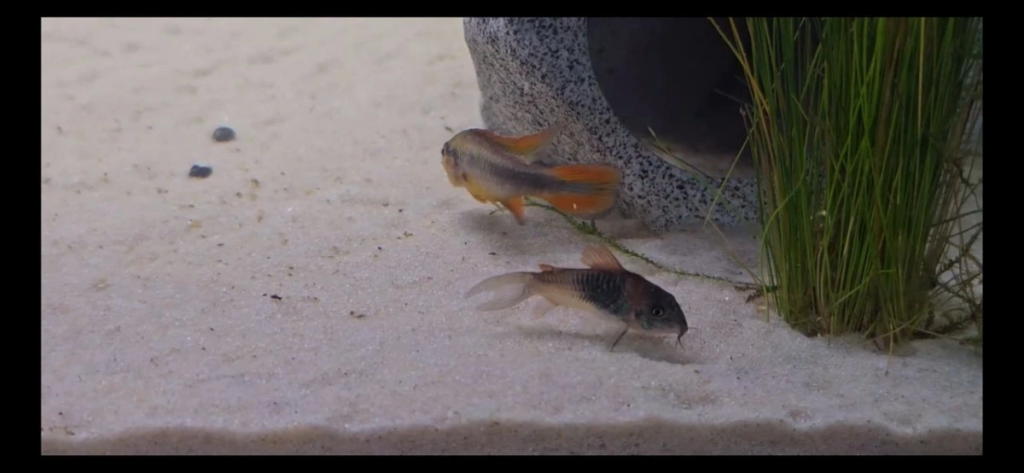
Decorating The Tank
This is where your creativity takes charge, there is no wrong or right way to decorate your tank. Just ensure the decorations are fish safe and have fun!
Use decorative materials, such as floating platforms, rocks, and underground tunnels, when creating dynamic aquarium aquascapes, while live plants give the tank a natural look, more on this later.
In my setup I used cholla wood in the foreground with plenty of Decorative Rock Caves which provide shelter as well as surface area for bio-film growth.
The layered substrate is not evenly layer either by design so that certain areas within the tank are elevated allowing me to embed a few caves and underground open sided tunnels into the ground.
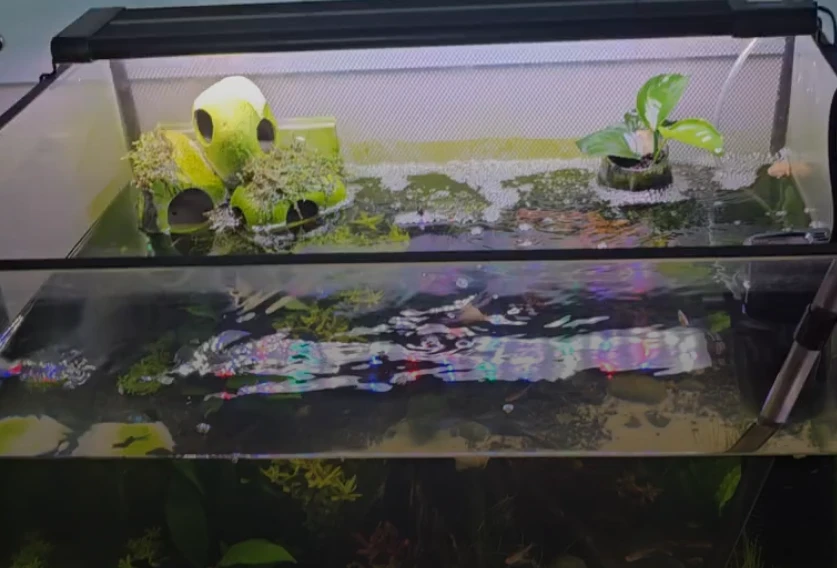
To utilize some of the vertical spaces, I also Installed a suction cup floating platform of caves (now covered in moss) and a large suction cup planted with an Anubias plant. When putting together the rock cave I ensured I used aquarium safe superglue to affix the decor so it doesn’t shift.
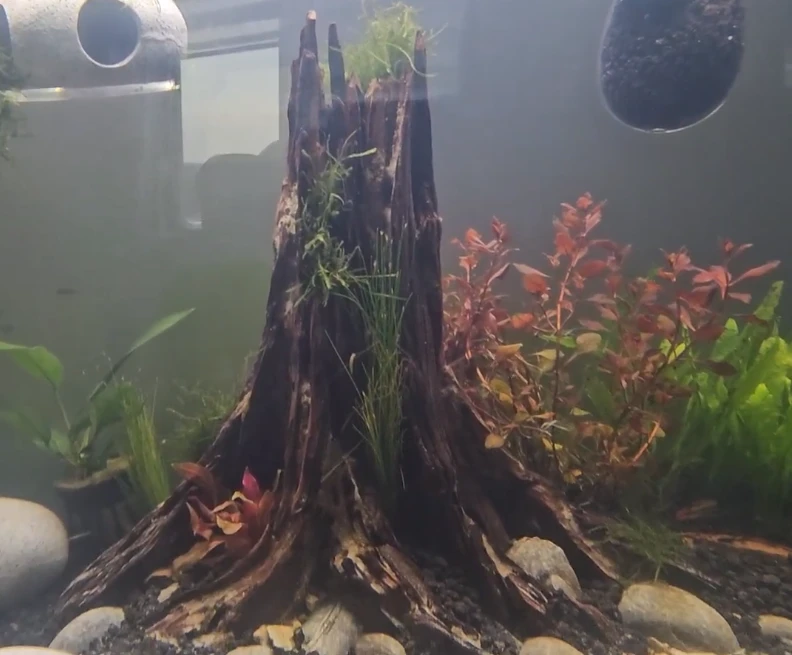
Last, and most importantly your tank needs centerpiece decor item. Mine, as seen above are driftwood shaped into the formation of a giant tree stump. Not only is this an eye-catching centerpiece, but it provides protective shelter for a large array of my smaller tank inhabitants.
Check out the Youtube highlight video at the beginning of this post for visuals and how these pieces were put together! And don’t forget to Subscribe For More Great Fishkeeping Youtube Content!
Live Plant Selection & Care
Let’s talk more about the best plants for aquariums because Anubias aren’t the only ones. You must use Java Moss because it provides shelter and hiding places for fish and shrimp and absorbs excess nutrients promoting beneficial bacteria growth.
But there is no set list of plants. This is another area where you can let your creativity and own tastes dictate selection. Just be sure the plants you choose can survive in the same conditions as your fish.
Other plants I used in my aquascaped 32-gallon tank included, Java fern, Moss Balls, Dwarf Hairgrass, Rotala Blood, and Downoi Pogostemon Helferi, all of which are optional but a great selection for a beautiful tank!
Use these aquarium plant care tips to keep them alive and healthy:
- Ensure proper stable water parameters
- Keep the tank oxygenated and well-areated (See Tank Essentials Section Above)
- Add API Root Tabs to your tank’s substrate at start and occasionally
- Add aquatic plant supplements like Flourish Plant Supplement and Flourish Excel to the tank’s water.
Understanding Fish-In Cycling
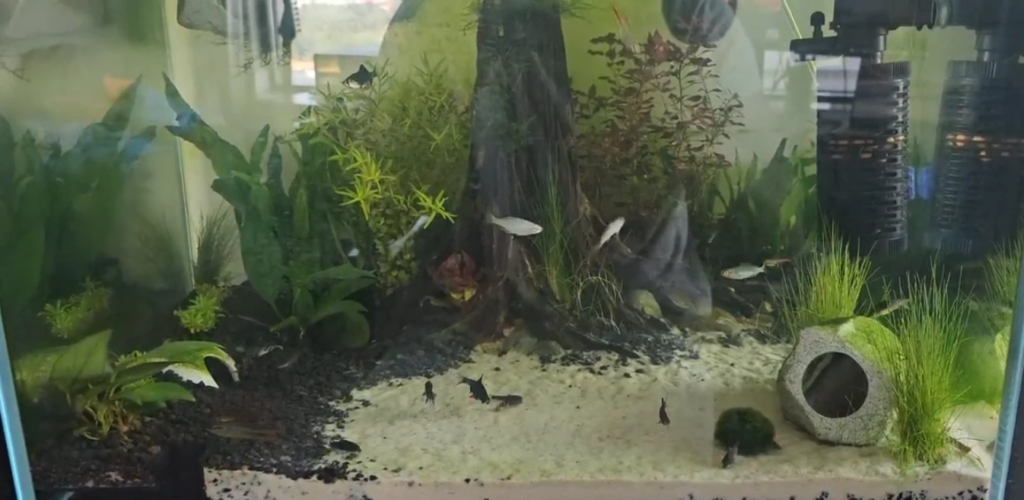
A proper fish-in cycling process completes the nitrogen cycle in your aquarium and keeps your pets from experiencing Ammonia poisoning. While you can rely on natural cycles, I had an older tank I wanted to disassembly and had to transfer fish into their new homes right away.
Regular water parameter testing during the fish-in cycle keeps you alert to your water’s health. In between the frequent water changes as your tank adjusts I recommend using aquarium water treatments like API Stress Coat and API Quick Start which reduces stress, while adding nitrifying bacteria.
Author’s Note: For an in-depth look at successfully completing this process check out our post the Comprehensive Guide to Fish-in-Cycle: Setting Up and Maintaining a Healthy Aquarium!
Fish & Invertebrate Choices
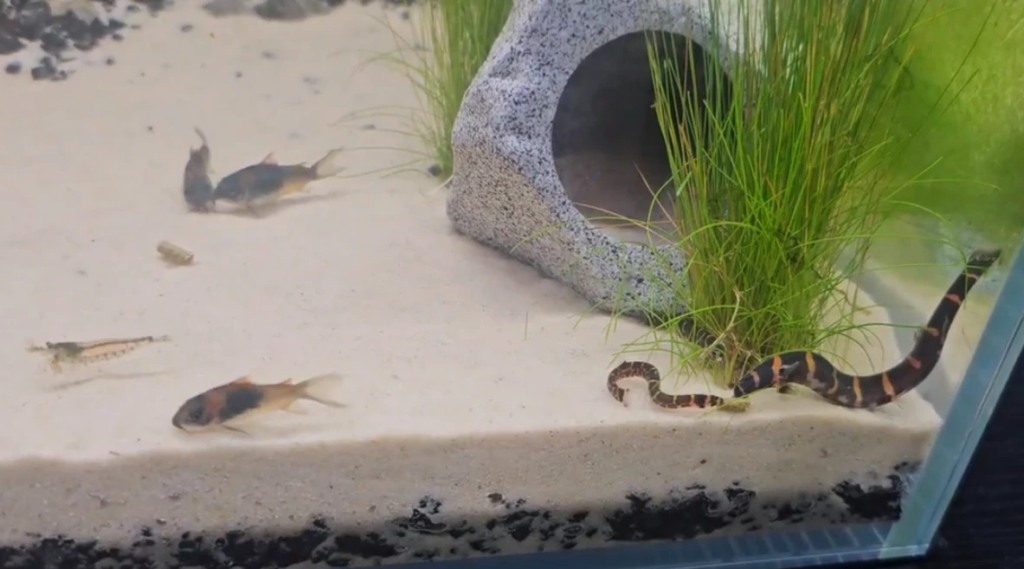
Choosing a freshwater community fish depends on the aquarium’s existing ecosystem. To achieve harmony, you should only mix compatible species. Here are some aquarium-compatible fish and invertebrate species that that I chose to live in this community:
- Mystery Snails
- A small school of Venezuelan Corydoras,
- Kuhli Loaches,
- Boesemani Rainbow fish,
- Dwarf Plecos and
- Neon Blue Eye Rainbowfish
My initial aim was to create a nano fish planted community tank with Boeseman Rainbowfish as the centerpiece species. But then I saw some really cool Green Barbs and added those, and now my tank seems overcrowded and these barbs are super aggressive (Barbs indeed do not co exist well with Snails)! I add this to say be mindful of initial tank size selection in case your vision changes overtime.
Oh well, guess I just have to set up another tank, stay tuned!
Diverse Feeding & Diet Options
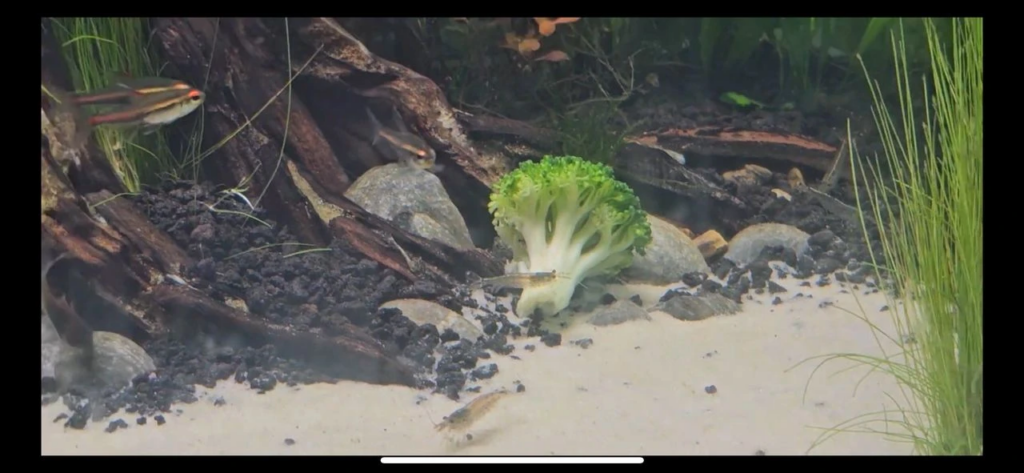
Since I touched on predatory behaviors, let’s discuss the ideal aquarium fish diet that will satisfy all species in the tank.
You have many options for feeding your pets, from live foods like Baby Brime shrimp to commercial foods like, Bloodworms, Sinking Algae wafers or pellets, and TetraMin Tropical Flakes as well as blanched vegetables. These fish food recommendations are accessible to beginners and pros from local aquarium pet stores or amazon.
Author’s Note: For more on feeding your aquatic pets check out The Ultimate Guide to Fish Food: Pros and Cons & Best Choices!
I also recommend automatic fish feeding products like this Automatic Fish Feeder with Camera that I set up when I leave for vacations. Not only does it maintain a strict feeding frequency that removes the risk of forgetting to feed them it also allows me to see my fish while I am away. You can also use a low tech feeder without a camera but what fun is that!
Note that most aquatic species are messy eaters and produce alot of waste especially if your tank is crowed like mine, so after feeding comes cleaning.
Tank Maintenance & Cleaning Essentials
Without maintaining proper water parameters, the tank’s water quality can degrade, which can cause a wide range of issues from cloudy aquarium water to illness and mass die off.
Monitoring your Tank
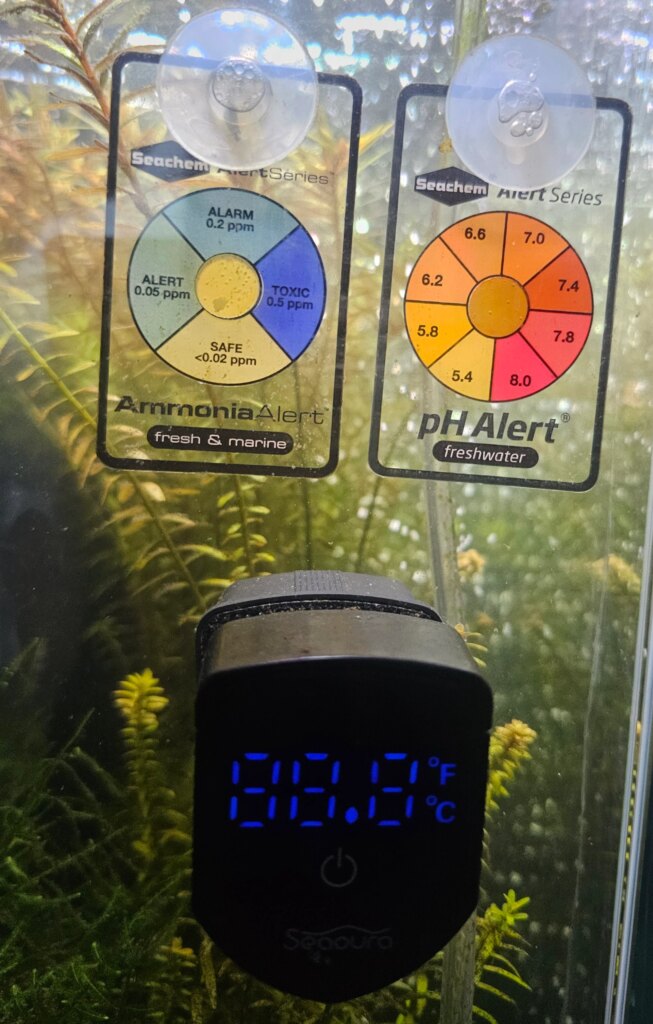
Tools like the Seachem Alert Combo and Digital Thermometer Glass Cleaner provide early alerting to Ammonia, PH, and temperature spikes in your aquarium. I still check my water parameters occasionally using test strips from my master test kit but it is much more convenient having monitors that simply stick to the tank’s glass and provide real-time readings.
The thermometer also serves as a glass cleaner, helping to easily scrub away algae or other substances on your tank’s glass obstructing the view you have created!
Tank Water Changes
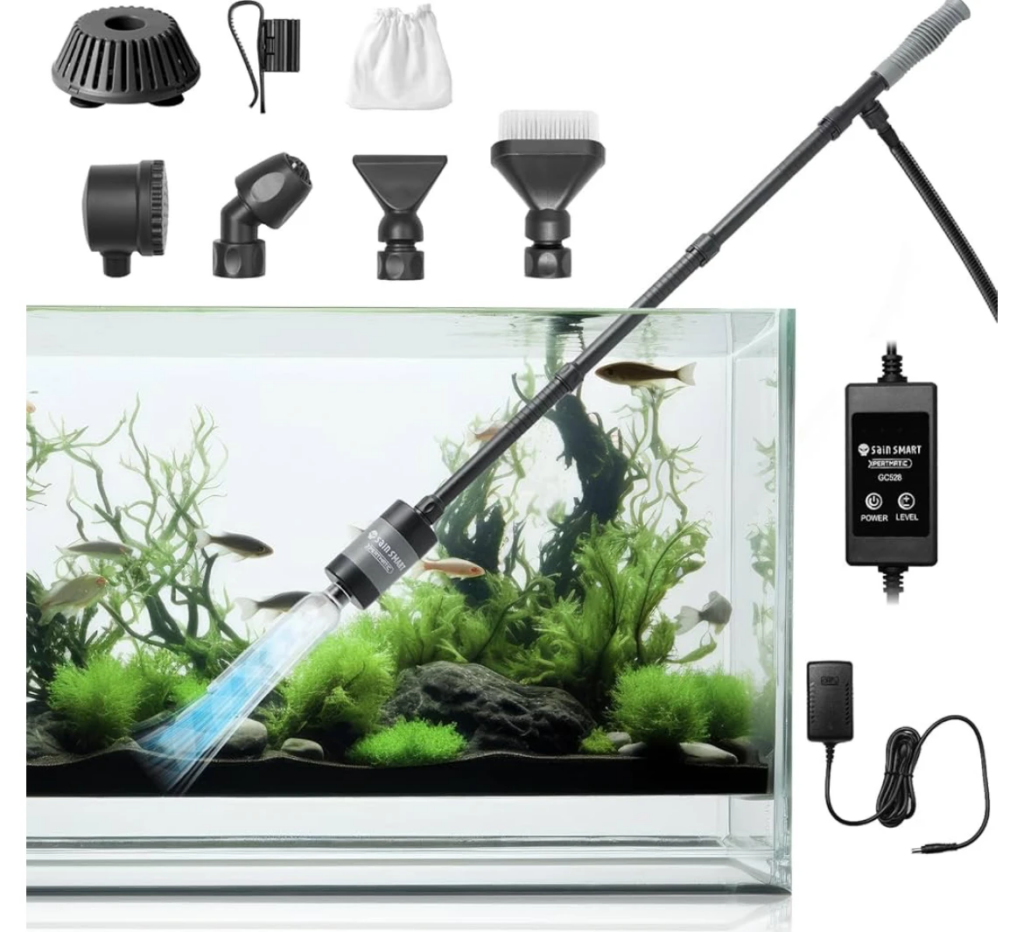
I highly recommend you use a high-quality electric aquarium cleaner to more easily clean the tank’s water and substrate. The XpertMatic Aquarium Gravel Cleaner pumps the water from my tank quickly as well as come with a bunch of attachments to help with the cleaning efforts.
Fish Health & Emergency Preparedness
Proper tank maintenance is part of aquarium health care, but other triggers of illnesses, like genetics and poor diet, can also cause illness.
I recommend keeping a fish fish tank emergency kit in case your pets fall ill. Some emergency meds and supplies I keep include:
| Meds | What It Cures |
| API General Cure | Parasitic Infections like Hole-In-the-Head, Velvet, Gil & Skin Flukes |
| API PIMAFIX | Fungus infections, like Cotton growth, reddish fins, and Bacterial infections |
| Aquarium Salt | Respiratory Disease, like breathing difficulties and rapid gill movement |
| Seachem Metroplex | Protozoan and Anaerobic Diseases like Ich and Hexamita |
| Melafix | Bacterial infections |
| ICK Cure | Parasitic Diseases like White Spot |
Follow this fish medication guide to save your pet’s life in an emergency. I prefer natural remedies where possible but sometimes quicker action is needed which is where these medications come in handy.
Fun & Optional Aquarium Items
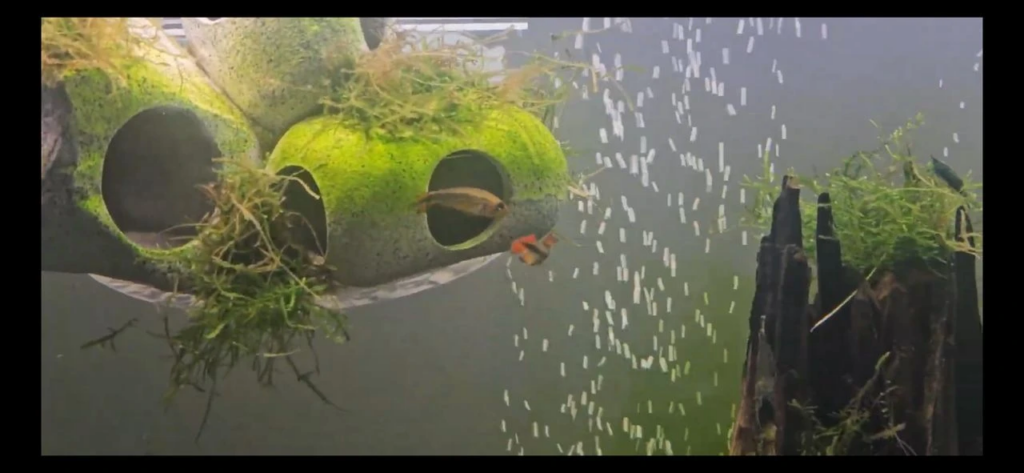
That’s enough seriousness for the day! Let’s discuss fun aquarium accessories that can improve the quality of your pets’ lives and lead to interesting interactions.
If you have top layer dwelling fish like my Neon Blue Eye Rainbowfish in your community, they will enjoy exploring a Fish Elevator. I find that placing a bit of food up there will even get bottom dwelling fish to explore the elevated tank space.
Switch up feeding sessions for your freshwater shrimp and other invertebrates with shrimp-feeding treats like shrimp lollypops, which is as it sounds, a coated stick that shrimp absolutely love to graze (my snails and their other tankmates like it too).
These aquarium novelty items are also visually appealing elements for your tank. It is fun to sit ack and watch all of my shrimp come out of hiding and swarm the lollypop. And I enjoy the look of amazement on guests faces when they ask how exactly the fish elevator defies gravity!
Final Thoughts & Setup Inspiration
I hope you’ve learned that freshwater aquarium planning can be an exciting experience.
When designing the ecosystem, get the right tank size as your vessel for creativity and balance function with beauty. For long-term aquarium success, you must keep learning and upgrading your pet’s environment with sustainable practices and tools.
Did you enjoy reading this aquarium setup inspiration guide? Please share your thoughts with the community in the comment box below.


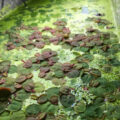
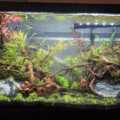
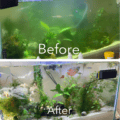
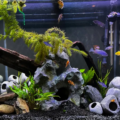
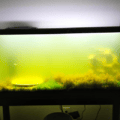
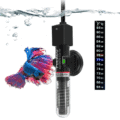
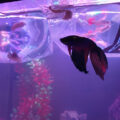
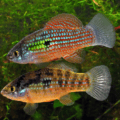
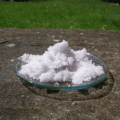
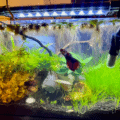
1 thought on “32-Gallon Freshwater Fish Tank Setup: Plants, Decor, & Fish-In Cycling Tips”